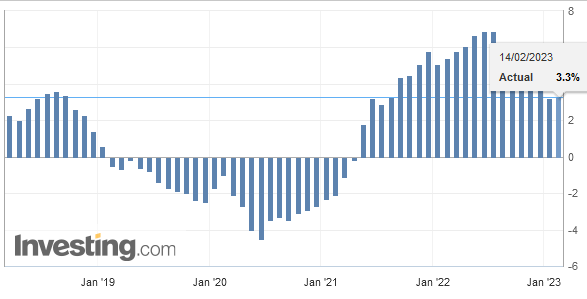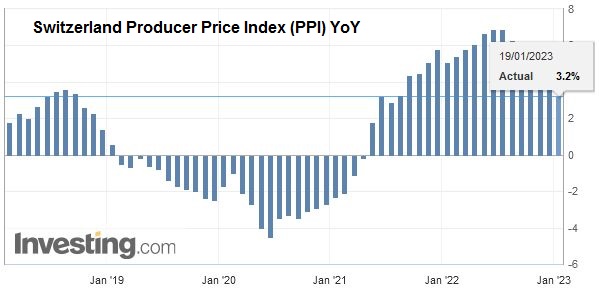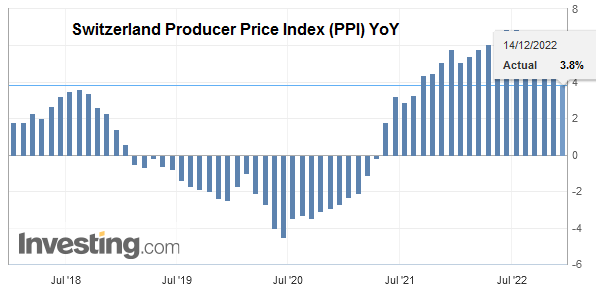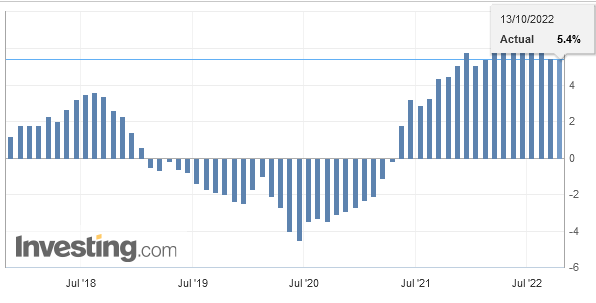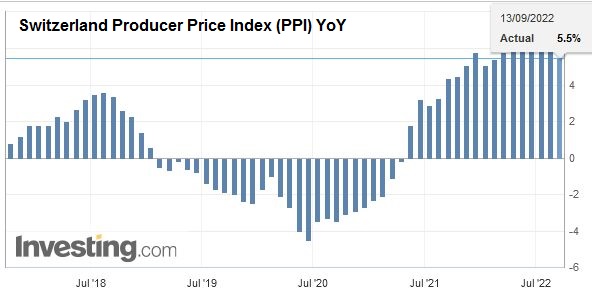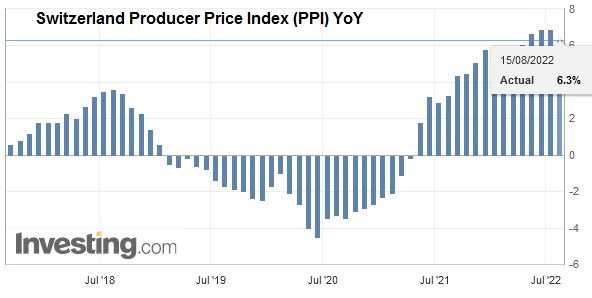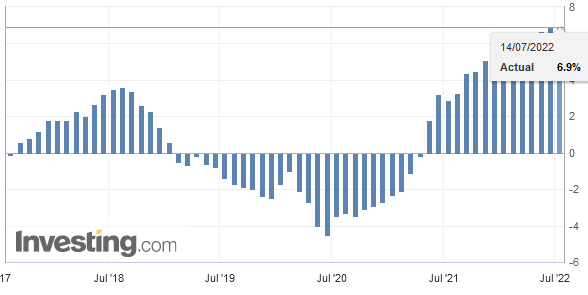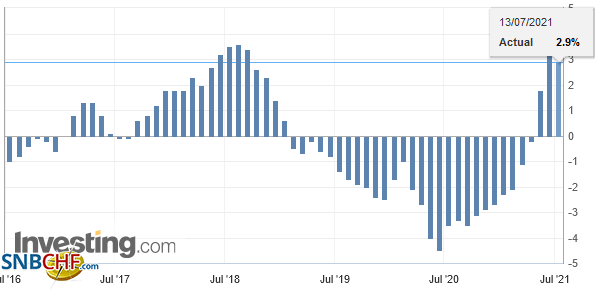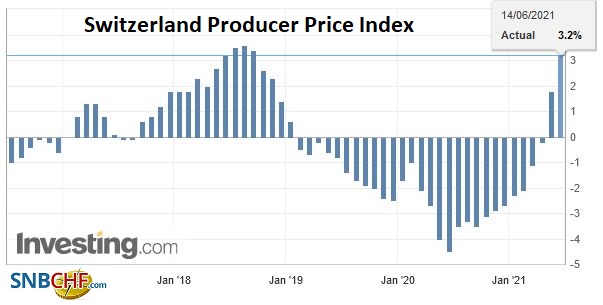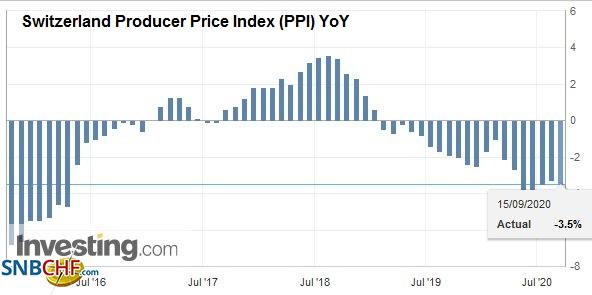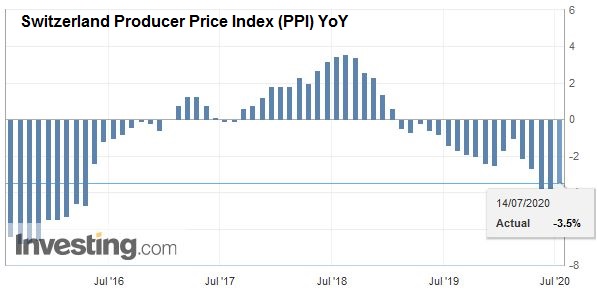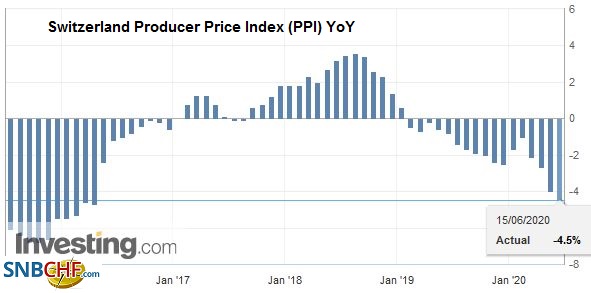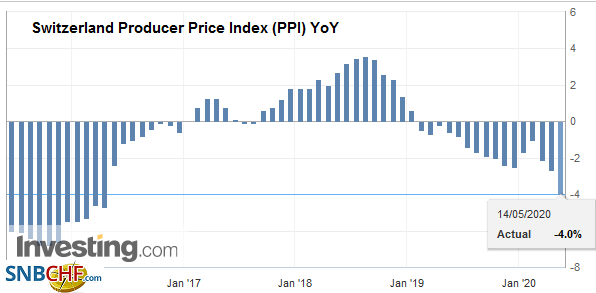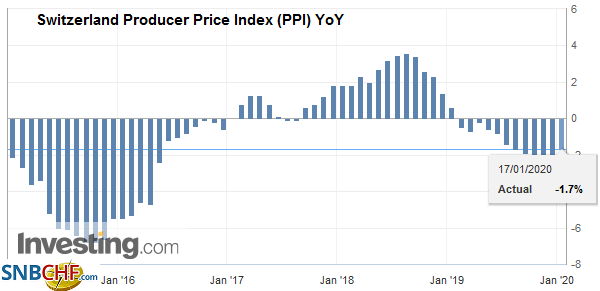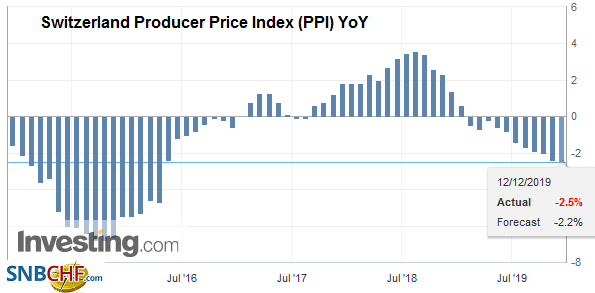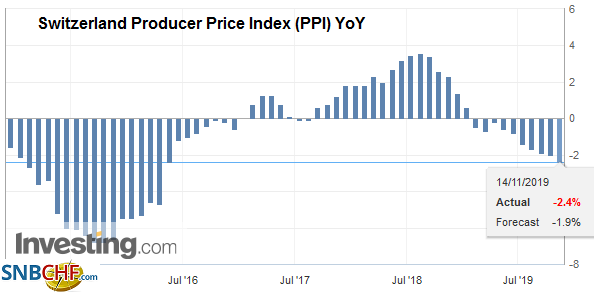The Producer Price Index (PPI) or officially named “Producer and Import Price Index” describes the changes in prices for producers and importers. For us it is interesting because it is used in the formula for the Real Effective Exchange Rate. When producers and importers profit on lower price changes when compared to other countries, then the Swiss Franc reduces its overvaluation. The Swiss PPI values of -6% in 2015 (see below), compared to -3% in Europe or -1% in the U.S., diminished the overvaluation. In 2017, however, producer prices are rising again – in both Europe and Switzerland. See more in Is the Swiss Franc overvalued?
Producer and Import Price Index in November 2017
From the data release of Swiss Statistics:
| Neuchâtel, 14.12.2017 (FSO) – The Producer and Import Price Index rose in November 2017 by 0.6% compared with the previous month, reaching 101.6 points (base December 2015 = 100). The rise is due in particular to higher prices for petroleum products, chemical and pharmaceutical products and scrap. Compared with November 2016, the price level of the whole range of domestic and imported products rose by 1.8%. |
Switzerland Producer Price Index (PPI) YoY, November 2017(see more posts on Switzerland Producer Price Index, )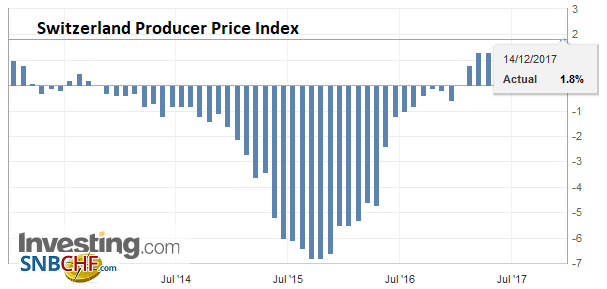 Source: Investing.com - Click to enlarge |
Download press release Producer and Import Price Index in November 2017
German text Produzenten- und Importpreisindex im November 2017
Produzenten-und Importpreisindex steigt um 0,6 Prozent im November 2017Neuchâtel,14.12.2017(BFS)–Der Gesamtindex der Produzenten – und Importpreise erhöhte sich im November 2017 gegenüber dem Vormonat um 0,6 Prozent und erreichte den Stand von 101,6 Punkten (Basis Dezember 2015 = 100). Der Anstieg ist vor allem auf höhere Preise für Mineralölprodukte, chemische und pharmazeutische Produkte sowie Schrott zurückzuführen. Im Vergleich zum November 2016 stieg das Preisniveau des Gesamtangebots von Inland – und Import – produkten um 1,8 Prozent. Dies geht aus den Zahlen des Bundesamts für Statistik (BFS) hervor. Für den Anstieg des Produzentenpreisindexes gegenüber dem Vormonat waren insbesondere die höheren Preise für pharmazeutische Spezialitäten, Schrott und Mineralölprodukte verantwortlich. Teurer wurden auch chemische Grundstoffe und Kunststoffprodukte. Preisrückgänge beobachtete man dagegen für pharmazeutische Grundstoffe. Steigende Preise gegenüber dem Oktober 2017 registrierte man im Importpreisindex vor allem für Mineralölprodukte. Preiserhöhungen zeigten auch Erdöl und Erdgas, Metalle, Metallhalbzeug, pharmazeutische Grundstoffe und Kunststoffe in Primärformen. Dasselbe gilt für Maschinen, sonstige chemische Produkte, Kunststoffprodukte sowie Papier und Papierprodukte. Billiger wurden hingegen organische Produkte der chemischen Industrie, pharmazeutische Spezialitäten und Frischgemüse. |
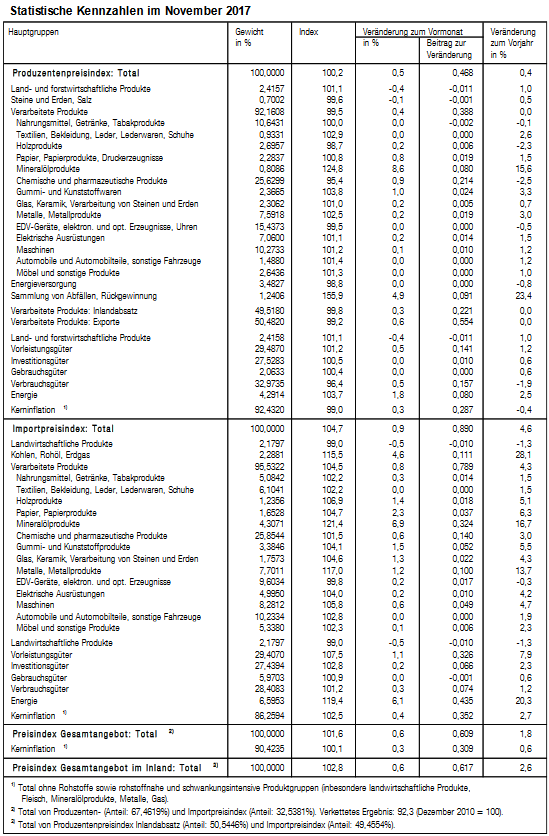
Tags: newslettersent,Switzerland Producer Price Index






















